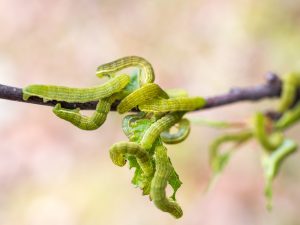No simple answers on future problems with pest insects
By The Swedish University of Agricultural Sciences1/23/2020

The autumn moth (Epirrita autumnata) has expanded its range as the climate has become warmer, which partly explains the increased damage on arctic birch. Photo Credit: Philipp Lehmann,
While some trends suggest that insect abundances generally decrease, there is also a fear that problems with pest insects will increase in the future. The logic is simple – insects are ectothermic and should thereby be favored by ongoing climate warming. It is however not that easy to predict future damage of pest insects, according to an international research group where SLU and Stockholm University are represented. The researchers studied 31 of the worst global insect pests and found a great variety of responses to climate change.
The study was recently published in the journal Frontiers in Ecology and the Environment.
That the climate is warming is shown by countless studies across the globe, and a common fear is that warming climates will lead to more damage from insects on plants. For example, the area of damaged arctic birch in Northern Scandinavia has increased significantly during the last decades, and this can partially be explained by increasing winter survival and range expansion of two species of moths, the winter moth (Operopthera brumata) and the autumn moth (Epirrita autumnata).
An international research team studied about 30 of the globally most detrimental pest insects and for almost all of them, the researchers indeed found that damage also increased, as expected. These include for instance the European spruce bark beetle (Ips typographus) and the bird cherry-oat aphid (Rhopalosiphum padi), two well-known pest insects in Northern Europe.
But quite surprisingly, for over half the species the researchers could find examples of both increased and decreased damage, but in different part of the species range. This is seen for instance for the hemlock wooly adelgid (Adelges tsugae) in North America, where damage is increasing in the northern part of the range, and decreasing in southern parts of the range.
Read more here: https://www.slu.se/en/ew-news/2020/2/no-simple-answers-on-future-problems-with-pest-insects/
Read the article in Frontiers: https://esajournals.onlinelibrary.wiley.com/doi/full/10.1002/fee.2160